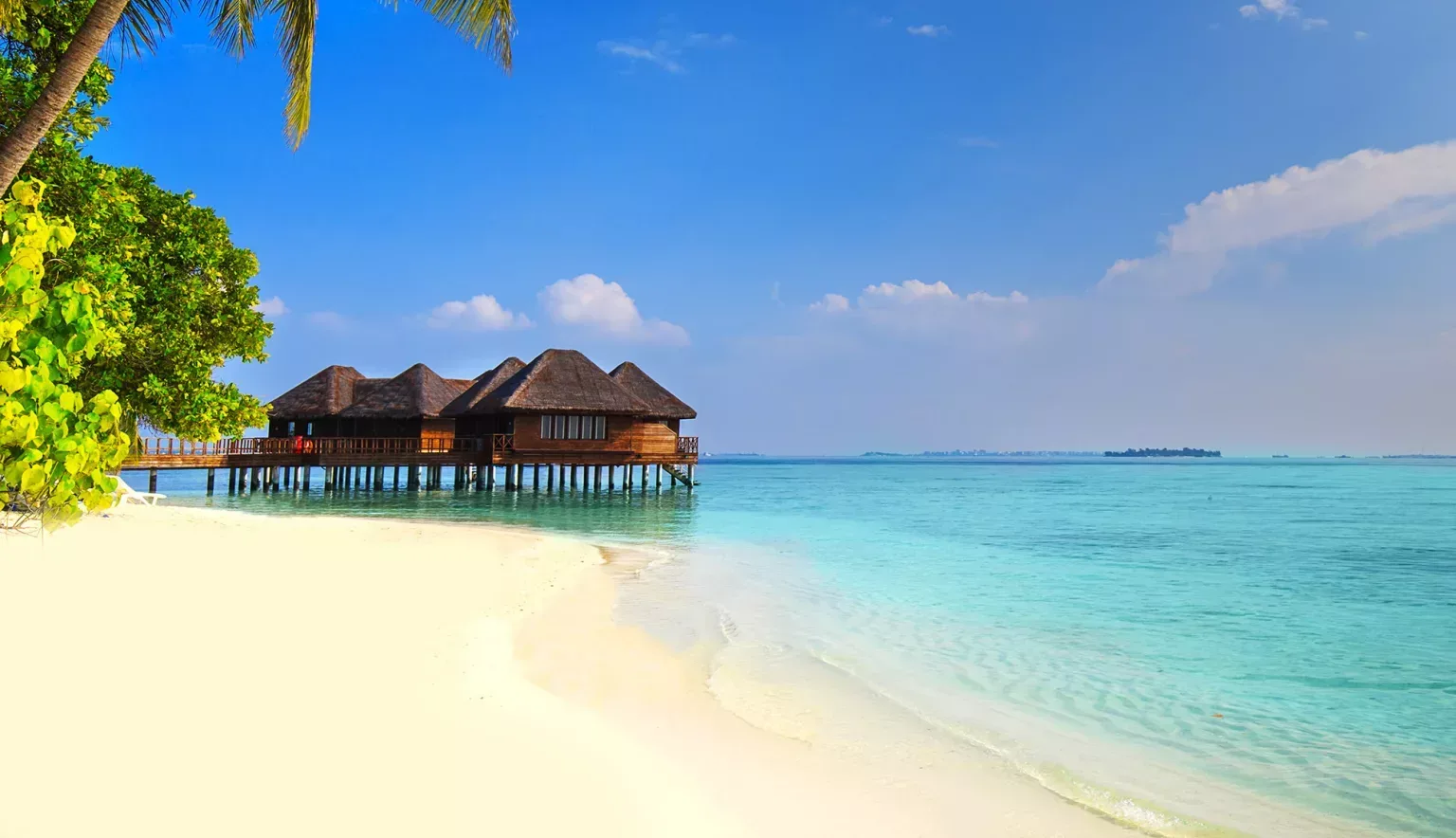Maldives is a country of rugged, otherworldly landscapes; a desert realm with a complex history and culturally diverse inhabitants.
MALDIVES
Celebrate the end of lockdown with an unforgettable trip to the Maldives. It is an archipelago of 26 atolls – rings of islands and reefs of varying shapes and hues of blue, from turquoise to indigo.
With over 1,200 islands in total, this is the place for beaches; waving palm trees, icing sugar sand and azure waves. Many people come to the islands simply to relax on the beaches and enjoy themselves. But Maldives is 99 percent water and one percent land, meaning there are a lot of activities that take place at sea. These include adrenaline-fuelled watersports such as surfing, kitesurfing, jetskiing, parasailing and banana boating. Serene rides around the island in a private catamaran or canoe are also popular, as are liveaboards, luxury yachts housing between 12-30 passengers.
Maldives is blessed with around five percent of the global reef area; it boasts 250 species of coral and more than 1,000 species. As a result, it has some of the best – and most colourful – diving sites in the world. Explore this vibrant underwater world on a diving or snorkelling trip run by one of the islands’ many operators.
The Maldives is one of the world’s top honeymoon destinations, thanks to its serene island environment and luxury accommodation offering of waterside villas, resorts and bungalows. Most accommodation offers a range of romantic activities, from a candlelit dinner on an uninhabited island to sunset boat rides with a champagne toast.
But it’s not all about the romance. Maldives also has a rich and fascinating culture, heavily shaped by Indian, Sri Lankan, Persian, Indonesian and African Influences. With a majority Muslim population, the country has some interesting festivals in which tourists are welcome to join. Bodu Eid, celebrated on the day after the Hajj pilgrimage is traditionally made, is a re-enactment of a local legend when a giant fish and some ghosts came out of the sea, and was caught by the villagers with the help of a holy man. Maali neshun is a dance that commemorates this story.
Make sure you take the time to visit a local restaurant and try some traditional Maldivian food, which is heavily influenced by its proximity to Sri Lanka and the local ingredients available, such as coconut and fresh fish. Mas huni is a traditional breakfast of tuna salad with coconut, chili and onion, served with chapati. Another popular dish is garudhiya, Maldivian fish soup served with rice, lime and plenty of chili.
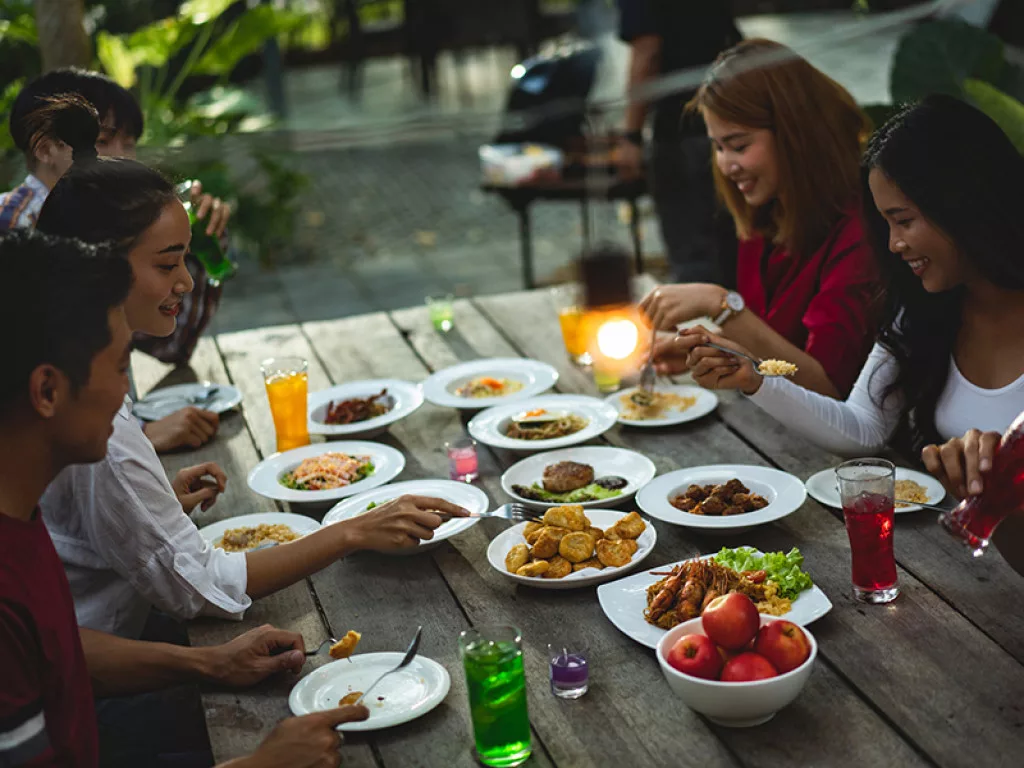
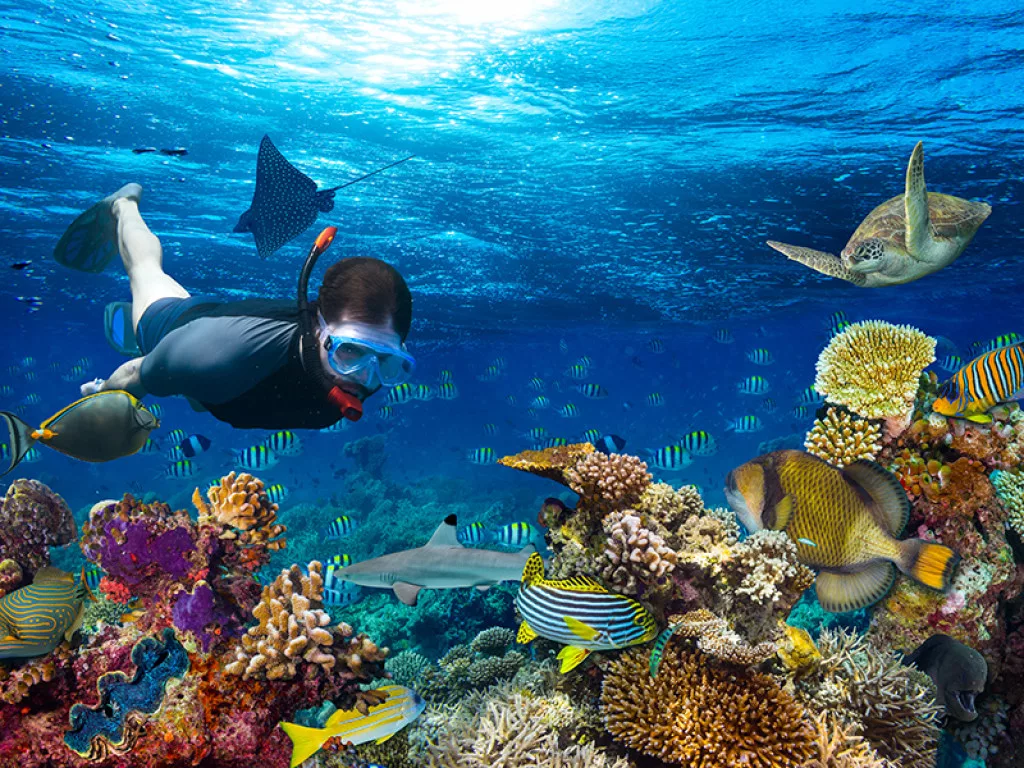
TOURISM INSIGHTS: VISIT MALDIVES
Visit Maldives (or Maldives Marketing & PR Corporation) was set up to promote tourism in the country, and over the years its efforts have ensured that Maldives is high on many travellers’ bucket lists.
But it’s safe to say that this year has been pretty different – the global pandemic and subsequent lockdowns have severely impacted global tourism, and Maldives is no exception.
Outlook Travel spoke to Thoyyib Mohamed, Managing Director of Visit Maldives, about the country’s tourism recovery plans.
Q&A WITH THOYYIB MOHAMED, MANAGING DIRECTOR, VISIT MALDIVES
How has tourism fared this year during the COVID-19 crisis?
Thoyyib Mohamed (TM): The year 2020 began with high hopes for Maldives, with the aim of breaking the record of 1.7 million tourist arrivals in 2019. However, the COVID-19 pandemic interrupted tourist arrivals as the country had to go into a complete lockdown, and airlines ceased operations for the time being.
No industry was as hard hit as the global travel and trade industry and Maldives remained no exception to this. For a country which heavily relies on the success and economic impacts of the industry, it caused a level of disruption.
There were a lot of challenges during this difficult situation, but Visit Maldives (along with other stakeholders) continued to work diligently to recover from the crisis. Several plans were developed for various scenarios prior to the reopening of borders on 15th July 2020, with strict safety measures in line with the World Health Organization (WHO) and local Health Protection Agency (HPA).
With the reopening of borders, the tourist arrival rates have slowly started to pick up. Day by day, more and more airlines are commencing operations from major parts of the world and Maldives has seen an increase in travel bookings. This will hopefully pave the way for more travel bubbles as the pandemic eases up in various parts of the world as well.
According to the most recent statistics, over 85,000 tourists have arrived with over 15 airlines resuming operations between Maldives and major cities, increasing the connectivity and providing an opportunity for tourist arrival rates to increase. Experts suggest that this rate will increase massively due to the coming festive season.
What is Visit Maldives doing to help ensure the recovery of tourism during 2021?
TM: Despite the obstacles faced during lockdown and cessation of airline operations, Visit Maldives, together with joint efforts by all stakeholders and everyone in the industry, continued to aggressively market and promote Maldives to the rest of the world.
We had to adjust our marketing strategies to focus on our online and digital media platforms. Our means of communication changed, and we were able to develop greater flexibility in terms of organising marketing events, webinars, and information sessions. Over the last few months, we have been able to work together to develop a more effective communication channel with our agents, partners, and stakeholders and of course, customers across various key markets.
Visit Maldives has been working tirelessly to assure tourists that Maldives is a safe haven to travel to, especially during this crucial period, and to keep them dreaming of the destination. All in all, Visit Maldives has carried out over 412 different types of activities in 22 global markets. 314 activities were carried out during this pandemic as part of the crisis recovery plan; some of these include fairs (online and offline), webinars, familiarisation trips, online roadshows, outdoor campaigns, and prominent digital media campaigns. We believe that digital media promotions are also vital as they create more opportunities for tourists to interact with us and ensure that we can deliver the latest travel guidelines to them in real time. Our efforts on all digital and social media platforms have increased and our presence is more visible on these platforms now.
The reopening of borders on 15th July was brought about with several discussions between the Ministry of Tourism (MoT) and all stakeholders. During the first phase, only some resorts and liveaboards, which were in adherence to the safety protocols as per MoT and HPA, were allowed to operate.
Before traveling to Maldives, tourists are required to fill an Online Health Declaration form 24 hours prior to departure and provide a negative PCR test result for COVID-19, conducted within 96 hours prior to departure. Children under the age of one year are exempted from this. Tourists showing symptoms of COVID-19 are also tested at the airport. This ensures maximum safety for everyone, including the wearing of masks and practicing social distancing.
MoT has also introduced Split Stay between all tourist establishments which will provide tourists a better chance to explore more of Maldives including liveaboards, guesthouses and local tourism.
International recognitions are an important part of marketing, especially during such challenging times. We applaud Velana International Airport (VIA) for receiving the Airport Health Accreditation from the Airport Council International (ACI). We also want to note with pride, the ‘Safe Travel’ Stamp from the World Tourism and Travel Council (WTTC).
In addition, Allied Insurance has also introduced the first COVID-19 travel insurance in Maldives, Allied Inbound. Allied Inbound covers medical charges, isolation facility charges, emergency medical transportation charges and interment charges following a positive diagnosis for COVID-19 during their stay in the country. The recently launched Maldives Border Miles program by Maldives Immigration is also remarkable in that it has received strong acclaim from the international media. The first loyalty programme of its kind, it is set to officially launch in the coming days.
These activities will guarantee that tourism arrival rates increase, and we hope to achieve pre-COVID numbers by the end of 2021. For the coming year, we will continue to promote the Maldives brand under an umbrella that will unify the various options that are available that will include resorts, guesthouses, liveaboards and hotels. At the same time focused campaigns will be held to promote the more affordable options for holidaying in the Maldives. A new focus will be given on segmental promotions. culture, diving, surfing, and experiences on liveaboards will be promoted as individual products.
We believe that it is not just Visit Maldives who has a hand in the recovery of tourism during 2020 and 2021 – it is a joint collaborative effort between Visit Maldives and the stakeholders.
How have you been using digital tools to market the Maldives this year?
TM: Yes, as mentioned before, we had to shift our marketing strategies to digital and social media platforms where our means of communication between ourselves and the rest of the world changed. We developed tactics and plans which enabled us to take part in online fairs, webinars, interviews, information sessions and publications. We started utilising more of our social media platforms and website, and commenced a regular weekly newsletter.
Some of these activities are the Visit Maldives Later campaign, The Sun Will Shine Again Facebook Live Event, Rediscover Maldives Webinar Series, localised campaigns on WeChat, Weibo and online roadshow series in China, VK campaign in Russia, digital campaign with Freakout Malaysia, digital campaigns targeting the Middle East market such as Zomato and WeddingSutra in India market, joint campaigns with travel agents and tour operators, global campaigns on CNN, TripAdvisor, Skyscanner, etc. We are also working with global brands such as CNN, Singapore Airlines, Vogue Arabia and more.
In addition, we have recently launched a global media campaign in 10 key markets which will utilise both print and digital media to promote the Maldives simultaneously in all these markets.
Do you think that climate change will affect the tourism industry in the Maldives? What steps can be taken by public and private stakeholders to help mitigate this?
TM: Climate change has affected Maldives and if we do not take steps to mitigate this, of course, the tourism industry will be affected by it.
For example, plastic pollution continues to be a pressing concern in Maldives. To reduce plastic pollution, President Ibrahim Mohamed Solih has approved a plan by the Ministry of Environment to phase out single-use plastics by the year 2023.
The government and industry have also been actively pursuing means to reduce the carbon footprint, promote renewable energy and adapt to more eco-friendly ways of living. Several resorts are now working to reduce carbon emissions and environmental impact proving that luxury and sustainability can go together. Some of the individual resorts carry awareness programmes and coral planting programs, and more.
Additionally, Addu Atoll and Fuvahmulah atoll have joined Baa Atoll in the list of UNESCO biosphere reserves. This is to ensure environmental protection, including the preservation of marine life and guaranteeing sustainable utilisation of these areas.
The government has now declared 24 sites in seven atolls as protected areas. They plan to designate at least one island, one reef, and one mangrove in each atoll as a protected area. Just last month, it was declared that the protected area of Thanburudhoo Lagoon would be extended to include Thanburudhoo Island.
Are there any interesting upcoming projects you wish to highlight?
TM: We have several interesting projects for the upcoming year including a lot of fairs, events and collaborations with celebrities, influencers and others who will help us promote Maldives even further, giving us more exposure.
We want to increase the benefits of tourism to the community through greater emphasis on experiential tourism and promoting the country as a premium luxury destination with affordable options, coming under one umbrella. These plans involve focusing on nature, preservation, and sustainability, as well as natural attractions. We also want to promote different segments of Visit Maldives, as well as all four products of tourism in Maldives: resorts, hotels, guesthouses and liveaboards.
Aside from its luxury/honeymoon offering, what does the Maldives have to offer the discerning traveller?
TM: There is a lot more than the luxury and honeymoon segments. Our tourist establishments and experiences are not limited to resorts. There are various options. For the ones seeking adventure, water sports including snorkelling and diving are a must-do and operate in almost every single part of the country, whether you are on a liveaboard, at a resort or staying in a local island guesthouse.
The local island guesthouse experience is also something one can enjoy. It provides a chance for tourists to mingle with the locals and experience their hospitality, as well as get a taste of the local cuisine, in its most authentic forms. These days, more travellers are being travel conscious and practicing sustainable means of travelling, and showing an interest in our conservation projects. Island hopping is also something which will give a clearer insight into the island lifestyle, as well as the natural environment of this beautiful country of ours. In fact, there is something for everyone here.
What three words would you use to describe the Maldives, and why?
TM: World’s Leading Destination.
Because we have received the World’s Leading Destination award by the World Travel Awards 2020, for the first time in the history of Maldives. It is a great honour to receive such a privileged award during such challenging times. We believe it is a testament of the love tourists carry for us and the hard work by everyone in the tourism industry.
Are you optimistic about the future of the tourism industry in the Maldives?
TM: Yes, I am. More and more tourists seem to be arriving day by day and we have over 15 airlines connecting us with major parts of the world. There are two travel bubbles, with India and the UK, and we look forward to initiating more of these in the future. We are doing everything we can to ensure that Maldives remains one of the safest destinations to travel to. The recent achievement of the World’s Leading Destination award will also give us much momentum in the tourism industry which we think will bring in more arrivals. The Minister of Tourism Honourable Dr. Mausoom Abdulla has declared ambitious plans to reach two million tourist arrivals to Maldives by the year 2023.
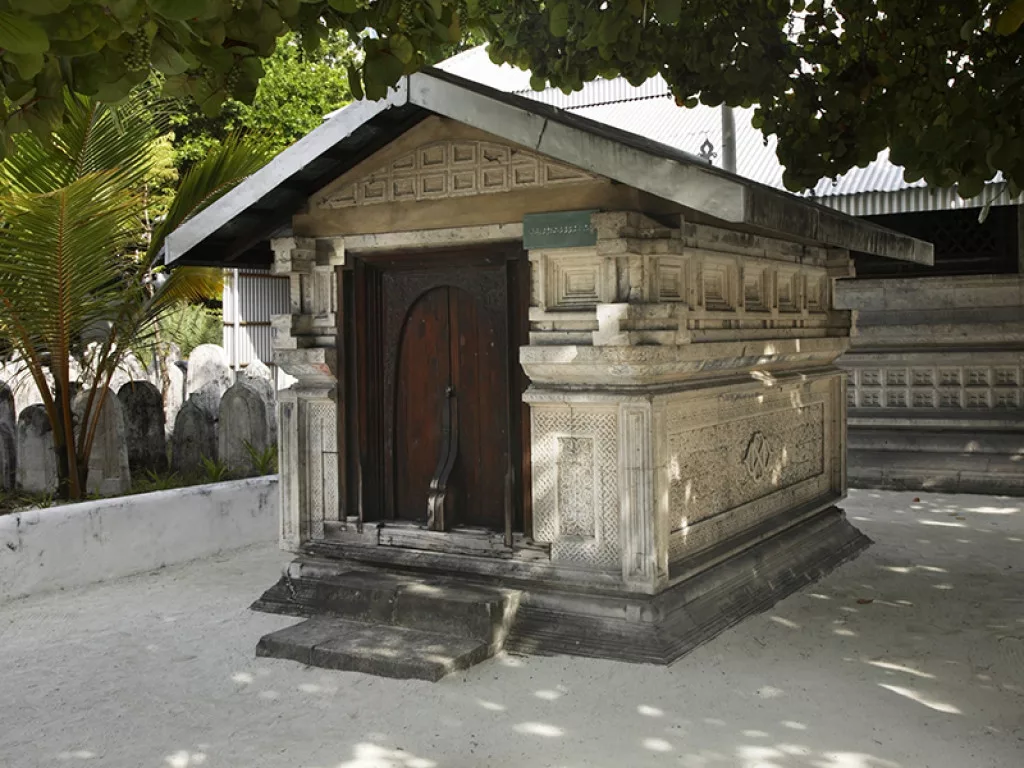
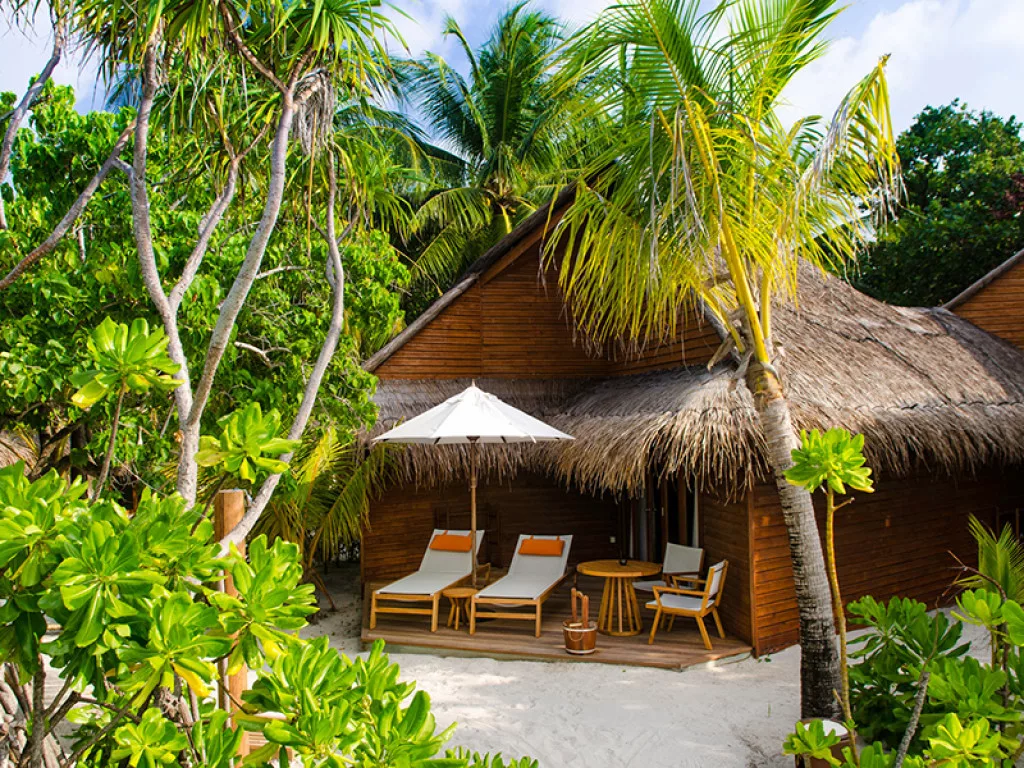
OUTLOOK RECOMMENDS
EAT:
For submarine fine dining…
For exquisite French gastronomy…
Le 1947, Cheval Blanc Randheli
STAY:
For boho-chic escapism…
For a tranquil resort on a private island…
Mirihi Island Resort is a small resort, tucked away on a private island of white sand beaches and azure waves. With no motorised watersports or noisy disco music you can enjoy a tranquil and relaxed vacation. The hotel offers 30 water villas with private sun decks jutting out into the ocean, so you can enjoy uninterrupted views of the ocean. The larger suites are perfect for groups of friends or families. Mirihi has a fantastic culinary offering of four restaurants and a range of private dining experiences, from in-villa dining to a private yacht. It also offers an amazing range of experiences, from snorkelling safaris to sunset yacht trips and massage therapies.
DO:
For luxurious liveaboard diving holidays…
For a unique underwater spa date…
MALÉ IN FOCUS
The island’s capital is small and densely populated, a far cry from the private islands and infinity pools of the five star resorts that the island is renowned for. But what the capital offers is a glimpse into the Maldives culture, and to experience life the way most of the locals do.
Start off at the National Museum, which houses a varied range of historical artefacts, including a coral stone Buddha head dating to the 11th century, and offers a fascinating insight into the island nation’s past. The National Art Gallery is nearby, and boasts an extensive permanent collection of indigenous artwork, as well as contemporary local art exhibitions.
Old Friday Mosque, the Maldives’ oldest mosque, is also worth a visit, as it is renowned for its beautiful carvings. It is surrounded by landscaped gardens, a peaceful oasis in a busy city.
For those looking for a little more hustle and bustle, visit one of Malé’s markets – at the produce market you’ll see the colourful fruit and vegetables brought in from the surrounding islands. In the city you’ll find a wide range of dining options, from sleek international restaurant Newport to Royal Garden Café, which Is housed in a gandwaru – a former nobleman’s house.
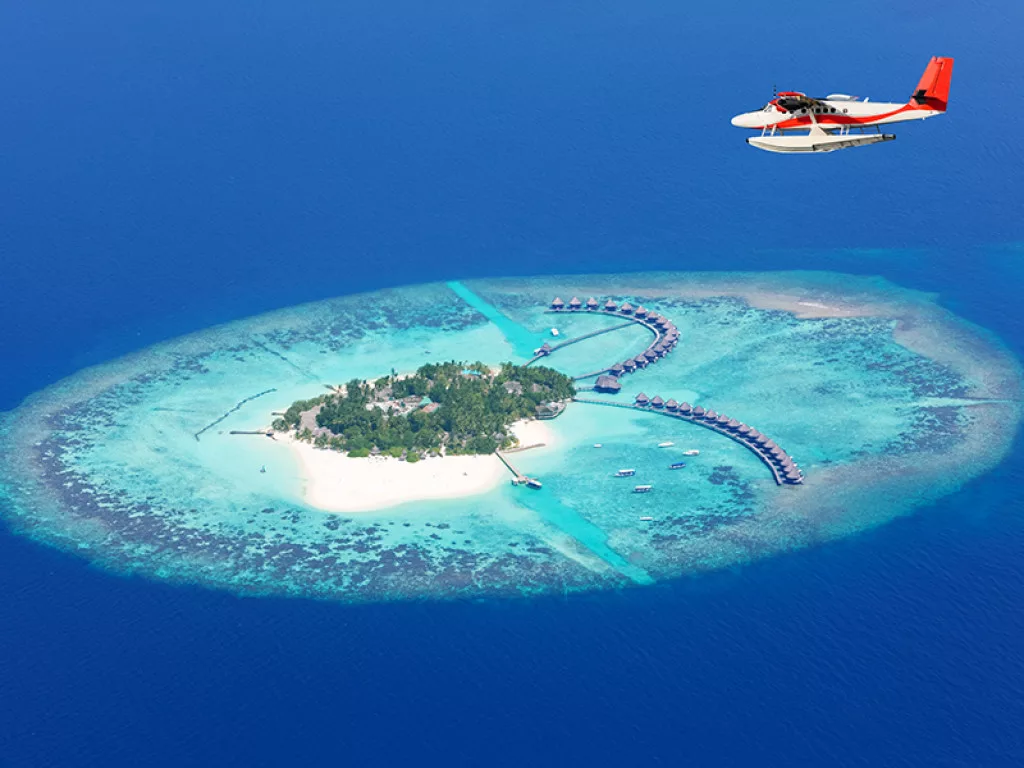
LANDMARK ATTRACTIONS
Old Friday Mosque
The country’s oldest mosque is located in Malé and dates from 1656. Made of coral stone, it is decorated with intricate carvings and Quranic script. It also has an interesting cemetery, which is well worth a visit.
Utheemu
The island of Utheemu, located on Haa Alif Atoll, is not just renowned for its beauty but its historical significance. It was once home to Sultan Mohamed Thakurufaanu, the leader credited with driving Portuguese invaders from the islands in the 16th century. The stunning backdrop is punctuated with heritage sites such as the Sultan’s birthplace Utheemu Ganduvara, a wooden palace.
Banana Reef
There are an abundance of spectacular dive sites in the Maldives, and Banana Reef is arguably one of the most colourful. This protected marine area is located 45 minutes east of Baros. It has a twisted topography of caves, caverns and overhangs, which house sharks, barracuda and travelly. The reef gets its colour from the iridescent shoals of yellow snapper and oriental sweetlips that inhabit its waters.
GETTING THERE AND AROUND
Travellers will enter the country via Velena International Airport, located on Hulhule Island near the capital island Malé. The airport provides connections to more than 30 international destinations, predominantly in Asia and Europe. Some of these flights only operate during high season.
From Velena International Airport, there are domestic flights connecting to 12 regional airports. Most resorts collect guests from Malé and take them to their hotels either by speedboat or chartered sea planes. Independent travellers will need to use the public ferry system or private speedboat transports (faster but more expensive) to get to their guesthouses or elsewhere.
The islands are predominantly car free, but can be explored by bicycle – larger resorts may provide these free of charge. The easiest way to travel between islands is by boat; rent a kayak or plan a catamaran tour through your resort to get further afield. Meanwhile, a private tour will ensure you get to visit multiple destinations across the country.


